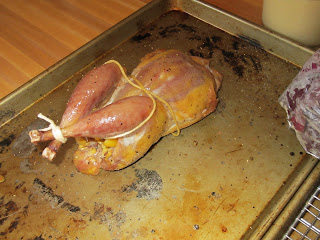Often times known as a french breakfast dish but a great deal of european cultures have their own variation on the theme and not always breakfasty and not always savory. Poland has their blintz, Russia has their blini, Hungry has their palascinta, etc. They are all slightly different variations on a very thin pancake wrapped up with some sort of surprise inside.
My girlfriend has her own bread sourdough starters adding to the fermenting vats around the house. This recipe uses those starters to create a sour slightly airy crepe dough. If you dont have starters going in your house they are a good healthy alternative to store bought bread yeast (see fermented steak sauce post). The premise is that you mix water with whole grain bread flour to form a watery paste-like consistency and leave it out for days on end, feeding it each day with more flour until the wild yeast start to develop enough to make the dough rise and aerate. This takes about a week to get it going but once you have a healthy culture living in your dough you can keep it in the fridge and feed it once a week and take it out to use it as needed. Grant it this is a difficult process to master and take a lot of trial and error, so for those who dont have starters laying around, I included an alternative crepe recipe taken from JOY of cooking, probably the best book for a beginner cook to read.
For the crepe batter
3/4 cup sourdough starter
2 eggs
2 T melted butter
whole milk to consistency (about 1/4 cup)
salt and pepper to taste
1 tsp sugar
Mix ingredients together to form a batter. Melt some butter in a skillet over medium heat and ladle about 3 oz of batter in the pan and tilt it immediately so it evenly covers the bottom of the pan. Cook about 2 minutes until it firms up enough to flip with a spatula. Upon flipping add your cheese and other ingredients. After another 1-2 minutes fold/roll up the crepe and remove to a plate to let cool a bit and then devour.
Alternate crepe recipe
1 cup all purpose flour or spelt flour
1 cup whole milk
1/2 cup lukewarm water
4 eggs
1/4 cup melted butter
1/2 tsp salt
1/2 tsp sugar
Mix ingredients, cover and let stand for 30 min before cooking. Follow same instructions as above.
thinly sliced sauteed shallots
thinly sliced apples (I used the Golden Russet variety)
cooked bacon strips (see Boogs Bacon post on how to make your own)
pea tendrils
goat cheese crumbled (I used aged gouda)
Pea tendrils are the shoots of the pea plant - they are tender, crunchy and delicious. Have fun with the fillings and be creative, crepes are a great template for building a meal out of stray veggies and a little cheese and whatnots you have laying around in the fridge.































